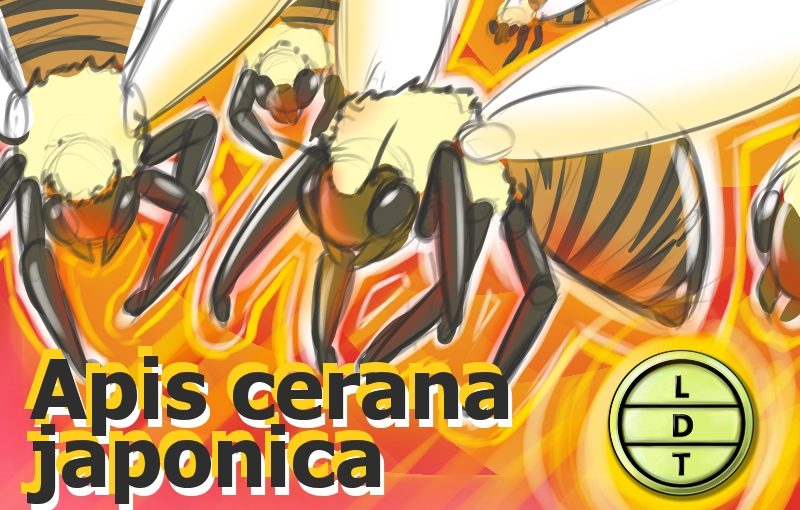“…and today we are talking about a sweet bee that secrets glee onto house bees that make honeys when they please inside trees.”
Intro
Being a honey bee means that you can get organic honey without paying the Trader Joe’s prices. But that doesn’t mean life is going to be easy. When predators barge through your hive’s front door, you need to bee like the Japanese Honey Bee and keep a trick hidden up your thorax. It’s just how a busy bee survives in Life, Death, and Taxonomy.
Range
Subspecies lives in Japan
Species all over Asia
Ancestors from Middle east (Just like everything else)
Description
Fairly typical honey bee. Distinct features. Hairs surround eyes for pollen collection. Convex scutellum (back part of the thorax). Black with four yellow stripes.
Colonies made up of a queen, male drones, and female workers. Workers have stingers and pollen press on their back legs. Pollen press is a little space between leg segments that pinch pollen. Allows them to carry big chunks.
Drones have no stinker, instead have sex organs. Also, have larger eyes.
Measure Up
Bee length – 11mm (.4 inches) – How many bees go into a 1976 Chevy Camaro? 451 bees
Colony size – Up to 7,000 workers – How many Jamestown colonies (based on when it was first founded) go into a JHB colony? 63 colonies (104 men and boys in Jamestown)
Nest Cavity Size – 10-15 liters – 12.5 liters – How many Japanese Honey Bee hive cavities go into an Olympic sized swimming pools? 200,000 hives
Fast Facts
Honey Bees are model organisms. Quintessential creatures that offer insight into a variety of other species. Insight into broader scientific studies (agriculture). Insight into larger ecosystems. Promising insight into human diseases. (not bees though).Western honey bees have been extensively studies, genome sequences. Asian honey bees were sequenced in 2015.
Different from western honey bees. They’re able to adapt to extreme weather conditions. They have a long flight duration. Effective grooming and hygienic behaviors. Japanese honey bees cooperative group-level defenses. More likely to leave abscond. Tiny foraging range (2500 m vs 6 kil). Morning forager.
They vibrate to warm hive in the winter. Worker position at entrance and fan wings to cool hive in the summer.
Workers do a Waggle Dance to communicate the locations of fertile foraging grounds. Worker reenacts the path to the harvest site. Dance tells other workers the the distance and location of flowers. Workers will get into fights trying to get their sisters to be queen.

